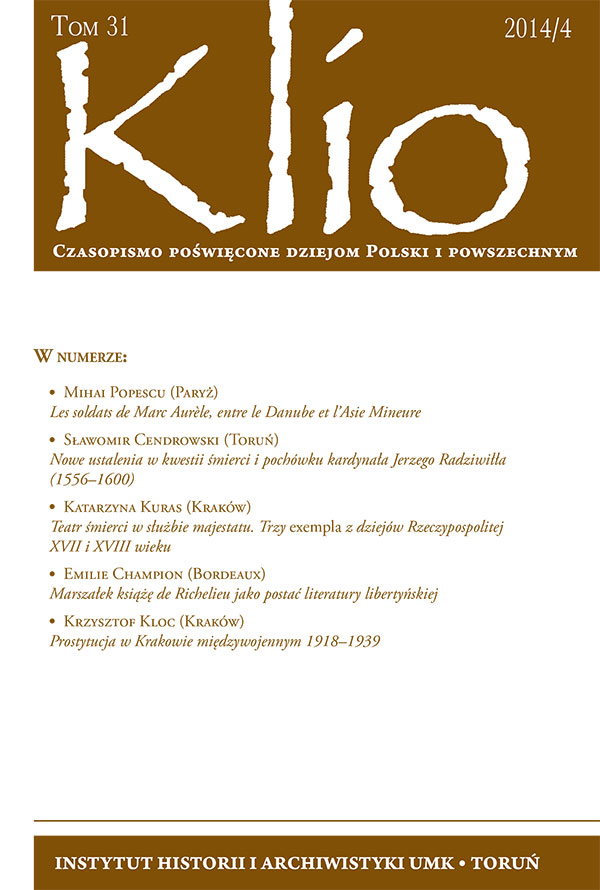Les soldats de Marc Aurèle, entre le Danube et l’Asie Mineure
DOI:
https://doi.org/10.12775/KLIO.2014.055Abstrakt
The article depicts bifront lines wars, which Romans had to wage during Marcus Aurelius’ and Lucius Verus’ reign (and after Verus’ death, only Marc Aurelius’ reign). After a long period of peace, Rome was then attacked by Parts and various tribes living on the North from Danube. The situation was complicated not only because of war, but also because of an epidemic spreading in the empire (the plague was driven from the Eat by Lucius Verus’ troops) and of increasing economiccrisis. To repulse the danger, Marc Aurelius and Lucius Verus chose many innovative solutions, which had never been applied before or which were not very popular, although already known in the past. They decided, among others, to introduce the Caesar onto the frontline. They made some changes in a leadership style, created new legions, recruited new soldiers from these social categories, which usually did not serve in the army (slaves, gladiators), and – finally – introduced
new fight techniques.
Stahování
Publikováno
2015-05-28
Jak citovat
1.
POPESCU, Mihai. Les soldats de Marc Aurèle, entre le Danube et l’Asie Mineure. Klio - Czasopismo Poświęcone Dziejom Polski i Powszechnym. Online. 28 květen 2015. Vol. 31, no. 4, pp. 3-18. [Accessed 21 prosinec 2025]. DOI 10.12775/KLIO.2014.055.
Číslo
Sekce
Artykuły
Stats
Number of views and downloads: 736
Number of citations: 0



